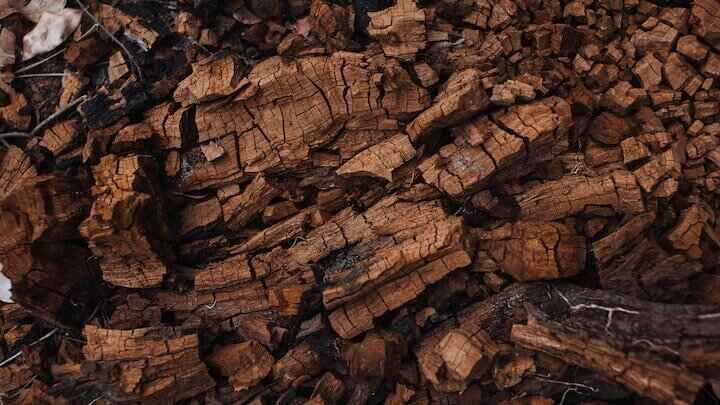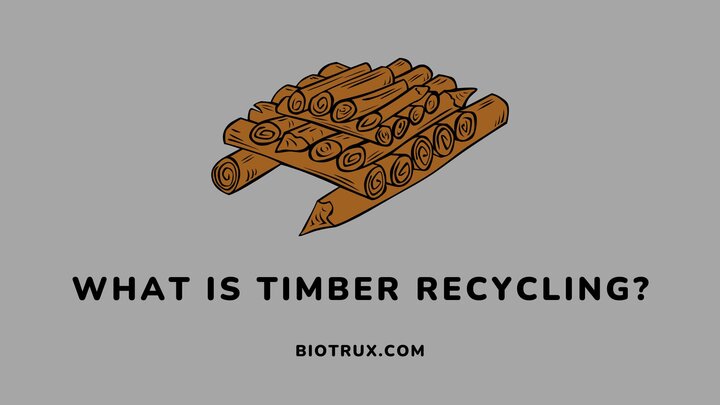Timbers or trees are the primary source of wood used in various construction projects. They feature in greenhouse upholstery and as partitions, to name a few. During transformation, timber or wood produce scraps meant for recycling.
In other words, timber recycling is converting wood waste into usable products. Hence, it is inappropriate and non-economical to leave scraps in a bin or dispose of them in landfills.
In this guide, I will explain how timber or wood is recycled and why the process is important.
You will also discover alternative and safe ways to eliminate wood waste (recycling remains the most environmentally friendly).
How to Recycle Timber

Timber or wood waste can undergo different processes during recycling. This depends on their status and integrity.
Here is a breakdown of the steps you need to recycle timber:
1. Collection
Aggregating your scraps is the first step of timber recycling. This can be done at a local HWRC (Home Waste Recycling Center) or by a waste management specialist.
2. Sorting
After collection, wood wastes undergo sorting. This process involves removing contaminated items and eventually grading the integrity of the wood.
The following classifications apply when it comes to grading wood with contamination:
- Grade A – Clean and untreated wood.
- Grade B – Grade A plus wood from construction and demolition.
- Grade C – Grade A and B plus wood panel products like plywood and MDF (Medium Density Fiberboard).
- Grade D – Any wood that contains contaminants such as metals or creosote — usually common in railway or fencing wood.
3. Shredding
After sorting, scrap wood undergoes shredding via a powerful mechanical shredder. Once the shredding is complete, magnets are passed through the wood to remove ferrous elements.
4. Screening and division
Once the wood is devoid of ferrous metals, it is screened using a vibrating machine that separates it into different sizes.
At this stage, such wood is appropriate for recycling into other products like furniture, animal bedding, or panel board.
Benefits of Timber Recycling
While the timber recycling process can be very rigorous, it boasts several advantages as long as wood scraps reach recycling stations.
Some of the benefits of timber recycling include the following:
1. Synthesis of new materials
Timber recycling has many end products. These products can be reused in constructing furniture, building materials, panel board feedstock, play area surfaces, and poultry or house bedding.
This saves you or industries the cost of engaging only virgin materials for production.
2. Conservation of natural resources
Timber recycling reduces deforestation. This single action plays a vital role in sustaining the ecosystem. Besides, even if we replace every tree we cut down, it would still take years for them to grow into maturity.
Hence, allowing them to release oxygen into the ecosystem while they absorb carbon dioxide at a stable rate is essential for preserving natural resources.
3. Mitigate greenhouse gas emissions
Trees absorb carbon dioxide, a gas that significantly contributes to global warming. Prioritizing recycling and preservation means there will be fewer emissions.
4. Cost-effective
This was mentioned earlier. However, timber recycling is also cost-effective because it helps you avoid exorbitant tipping fees.
5. Prevent fire hazards
Waste wood or scraps are a form of tinder. They are fire-friendly. Hence, recycling them regularly means there is a lesser risk of fire hazards.
Is Every Wood Recyclable?
Woods are generally recyclable. Examples include:
- Softwoods like cedar, spruce, and pine
- Hardwoods like oak, maple, and birch.
- Plywood
- Chipboard
- Blockboard
- Hardboard
- Oriented strand brand (OBS)
- Medium-density fibreboard (MDF)
FAQs
Why is recycled timber better?
Recycled timbers or wood are cost-effective and eco-friendly. You can buy as many on a shoestring budget without cutting down new trees.
How can recycling wood help the environment?
Recycling reduces the falling or cutting of trees. This allows for more absorption of carbon dioxide and the growth of its replacement.
What are the disadvantages of recycling wood?
The major downside to timber recycling is the cost of virgin wood. This is due to the extra work the process requires.
Conclusion
Recycling timber or wood waste requires stages that can be labor-intensive. Nevertheless, it is worth it because it protects the environment and natural resources.
In addition, there will be less wood waste in landfills once you know they can be recycled. All you need to do is locate or reach out to the closest waste management (for timber scraps) near you.
I hope you found this guide helpful. Paper is one of the end products of wood and is also recyclable. Check out my guide on recycling paper with staples to learn how.
Thanks for reading.

